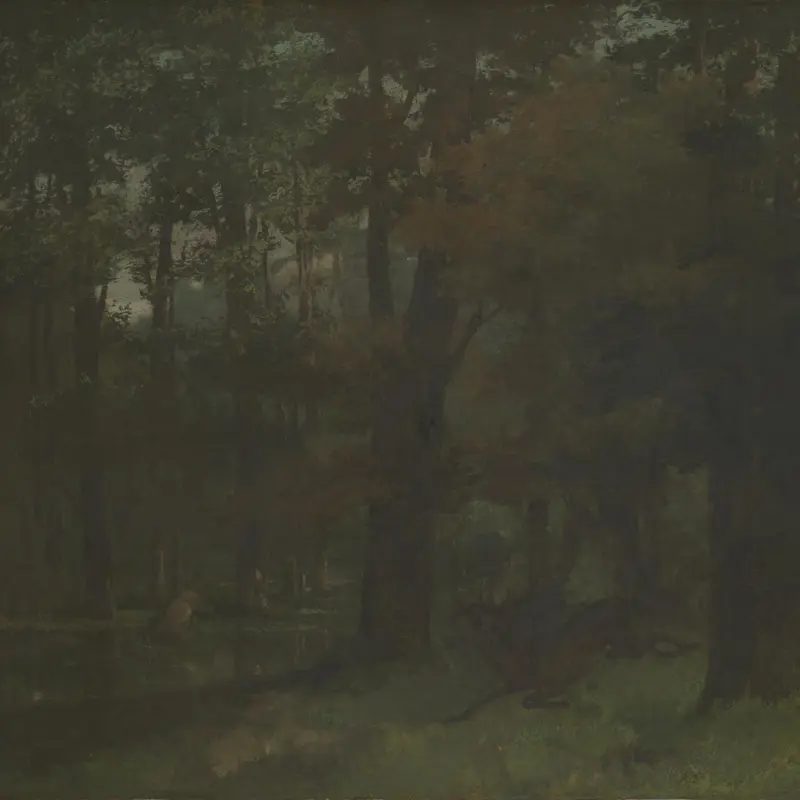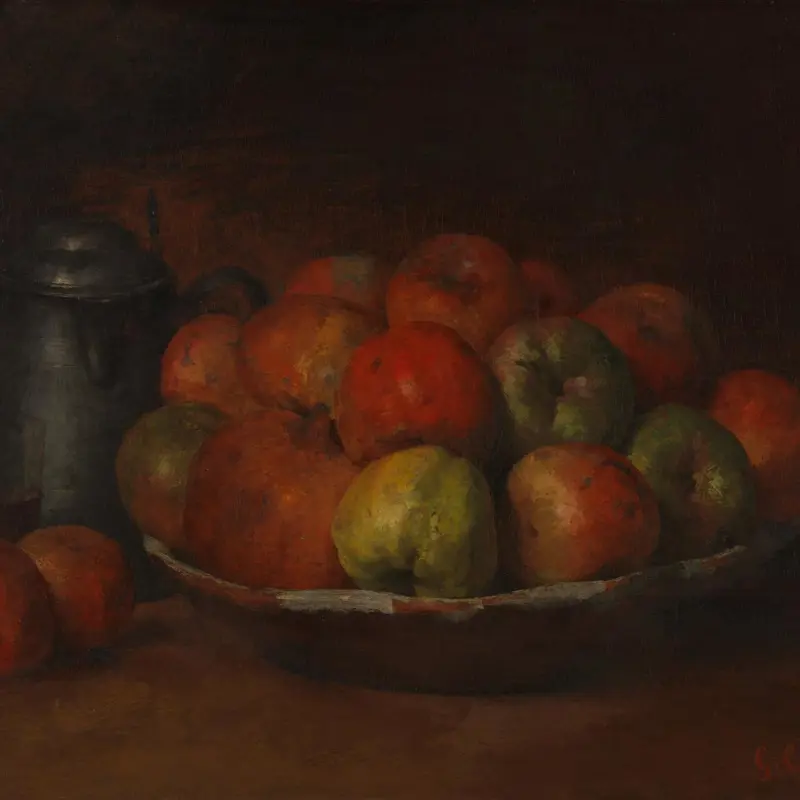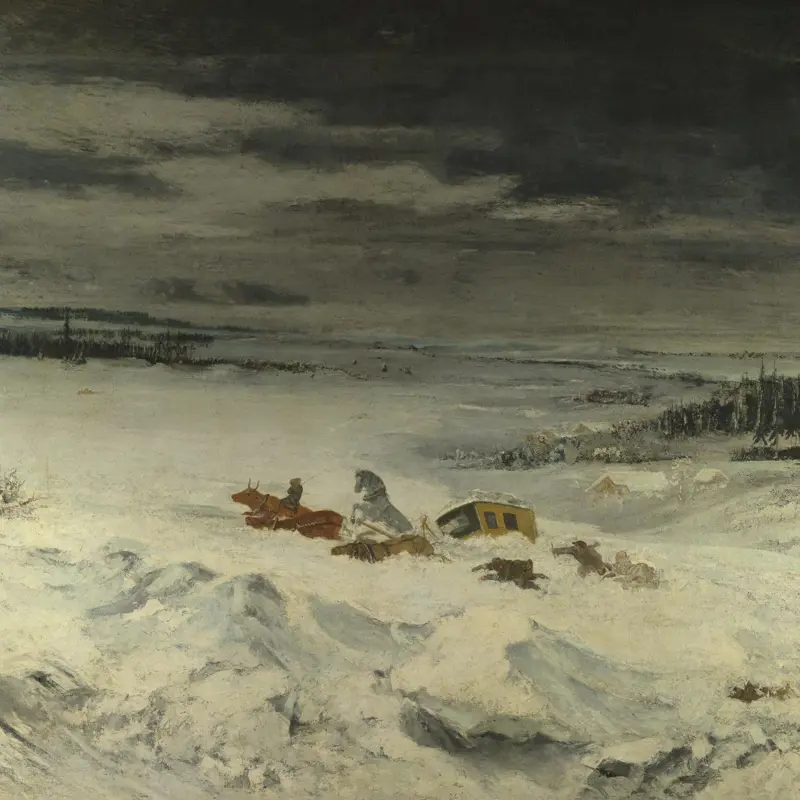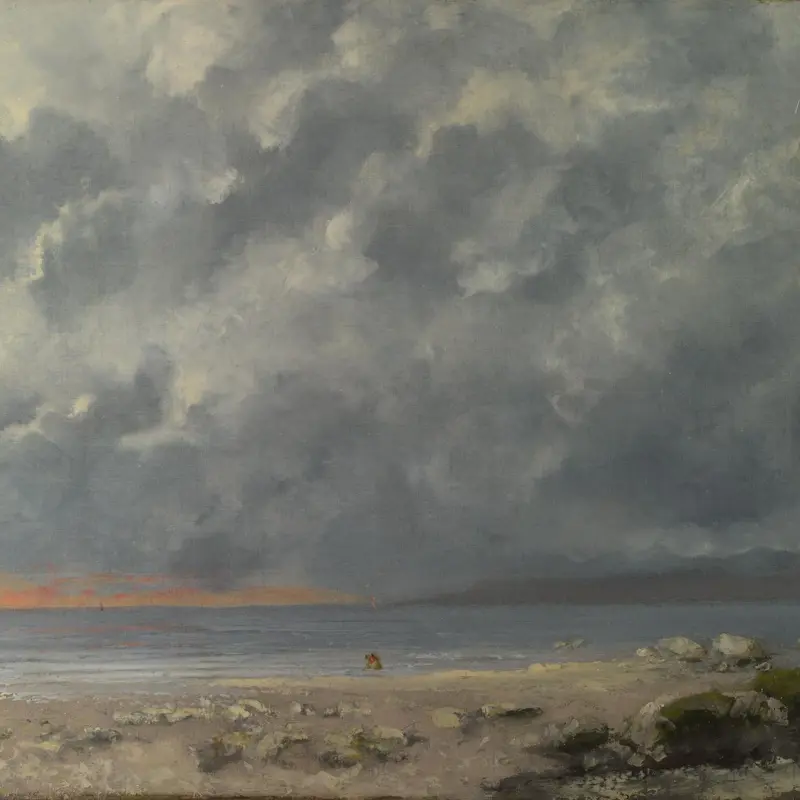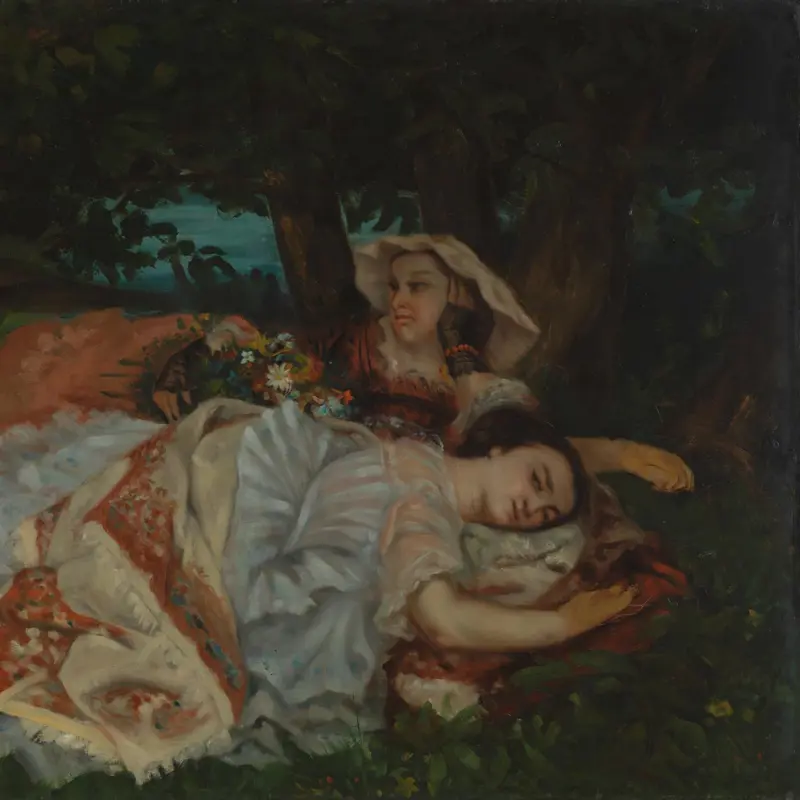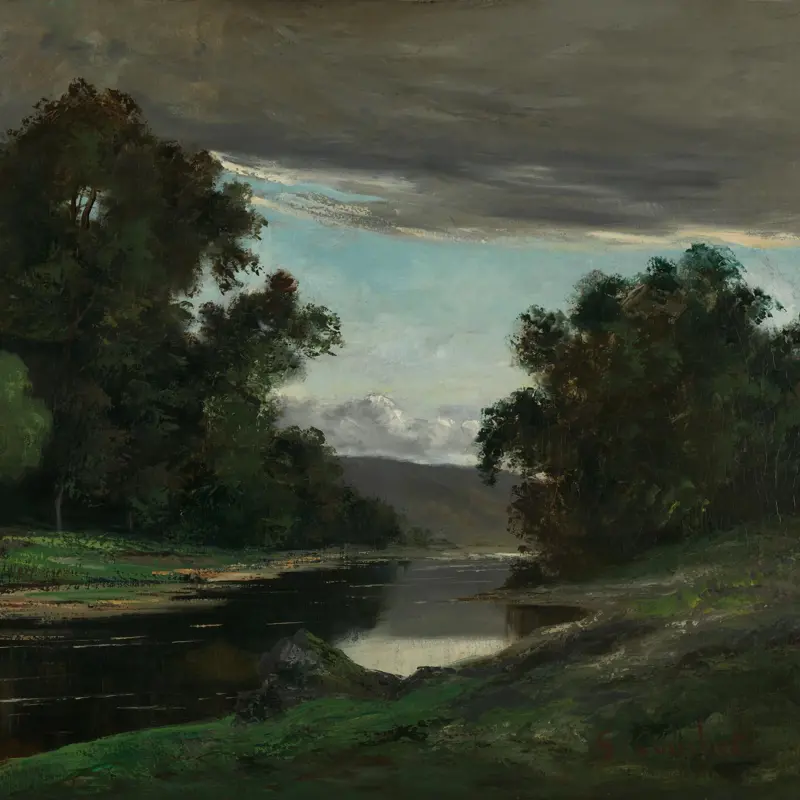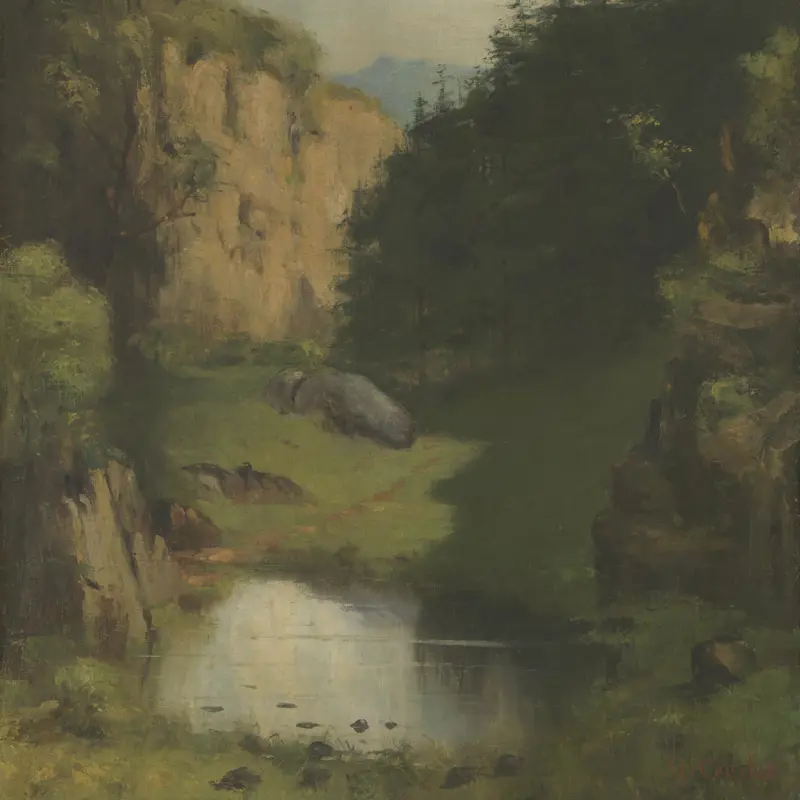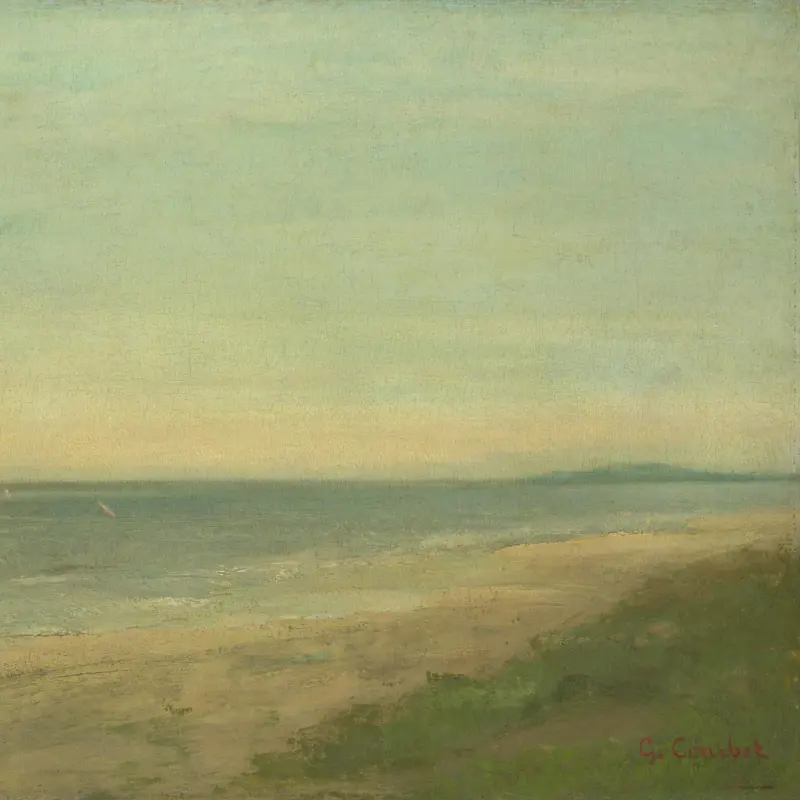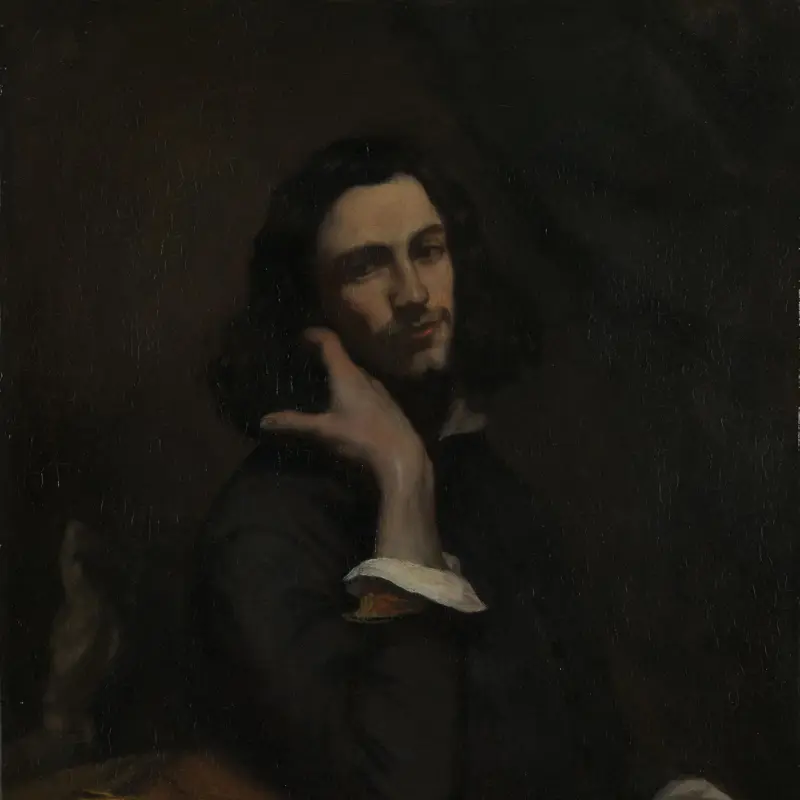Courbet was the main exponent of Realism in 19th-century French painting. His work contrasts with the Classicism of Jean-Auguste-Dominique Ingres and the Romanticism of Eugène Delacroix.
He relied on the use of the palette knife to create heavily impastoed surfaces, as if to stress his disdain for the fine finish of academic practice.
Courbet was born at Ornans in eastern France and received his early training in Besançon. In Paris from 1840, he studied especially the Dutch and Venetian paintings in the Louvre. He exhibited at the Salon in 1844, but public and official favour later deserted him. His mature works often treat genre subjects on the grand scale of history painting, as in his ambitious painting of his studio. After this was turned down by the Exposition Universelle in 1855, he held a one-man exhibition establishing his position as a Realist.
From the 1850s he travelled extensively in France. He was later imprisoned for his prominent role in the Commune in 1871 - as Director of Museums he was held responsible for the destruction of the column in the Place Vendôme. The Gallery's 'Still Life with Apples and Pomegranate' was painted in prison. His last years were spent in exile in Switzerland.

